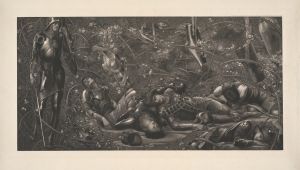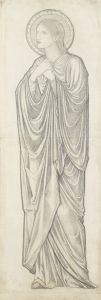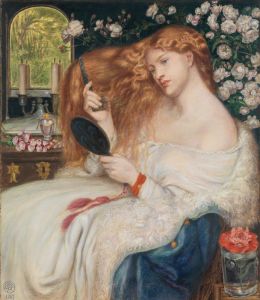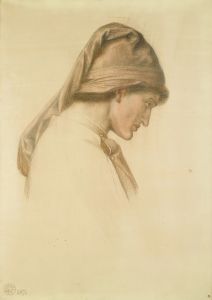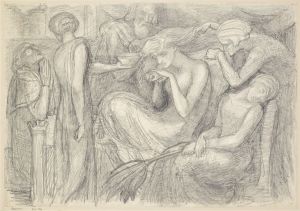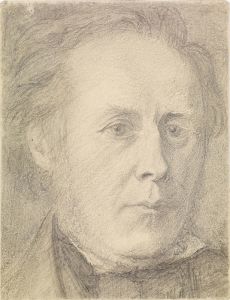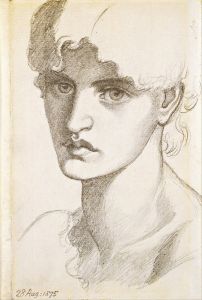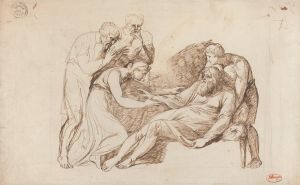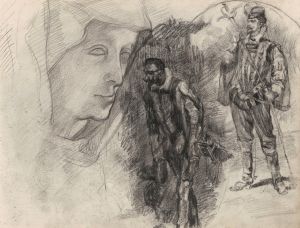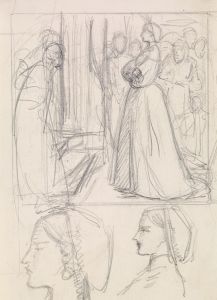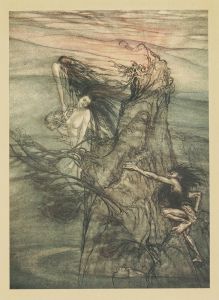
Study for the figures of Guenevere and Launcelot
A hand-painted replica of Dante Gabriel Rossetti’s masterpiece Study for the figures of Guenevere and Launcelot, meticulously crafted by professional artists to capture the true essence of the original. Each piece is created with museum-quality canvas and rare mineral pigments, carefully painted by experienced artists with delicate brushstrokes and rich, layered colors to perfectly recreate the texture of the original artwork. Unlike machine-printed reproductions, this hand-painted version brings the painting to life, infused with the artist’s emotions and skill in every stroke. Whether for personal collection or home decoration, it instantly elevates the artistic atmosphere of any space.
"Study for the figures of Guenevere and Launcelot" is a drawing by the British artist Dante Gabriel Rossetti, a prominent figure in the Pre-Raphaelite Brotherhood. This artistic movement, founded in 1848 by Rossetti along with William Holman Hunt and John Everett Millais, sought to return to the abundant detail, intense colors, and complex compositions of Quattrocento Italian art. The Pre-Raphaelites were known for their interest in medieval subjects, literature, and themes of romanticism, which are evident in Rossetti's work.
The drawing "Study for the figures of Guenevere and Launcelot" is a preparatory work that reflects Rossetti's fascination with Arthurian legends, a common theme in his oeuvre. The story of Guenevere and Launcelot is a tragic tale of love and betrayal, central to the Arthurian legends. Guenevere, the queen and wife of King Arthur, falls in love with Sir Launcelot, one of Arthur's most trusted knights. Their illicit love affair ultimately leads to the downfall of Arthur's kingdom, Camelot. This narrative of doomed romance and moral conflict provided rich material for Rossetti's artistic exploration.
Rossetti's study captures the emotional intensity and complexity of the characters' relationship. His depiction often emphasizes the tension and passion between Guenevere and Launcelot, reflecting the inner turmoil and the consequences of their forbidden love. The drawing likely served as a preliminary exploration of composition, form, and expression, which Rossetti might have intended to develop into a more finished painting or series of works.
As with many of Rossetti's works, this study demonstrates his skill in rendering human emotion and his ability to convey narrative through visual art. His use of line and form in the drawing would have been aimed at capturing the essence of the characters and their story, focusing on their expressions and gestures to communicate the depth of their connection and the tragedy of their situation.
Rossetti's interest in medieval themes and his unique artistic style have left a lasting impact on the art world, influencing subsequent generations of artists. His works, including studies like this one, are celebrated for their beauty, emotional depth, and narrative richness. The "Study for the figures of Guenevere and Launcelot" is a testament to Rossetti's ability to blend literary inspiration with visual art, creating pieces that resonate with viewers through their storytelling and aesthetic appeal.
The drawing is part of Rossetti's broader body of work that explores themes of love, beauty, and mythology, often featuring strong, expressive figures and intricate details. While the exact date of this study is not specified, it fits within the context of Rossetti's career-long engagement with medieval and romantic subjects. His work continues to be studied and admired for its contribution to the Pre-Raphaelite movement and its enduring influence on the portrayal of literary themes in art.





